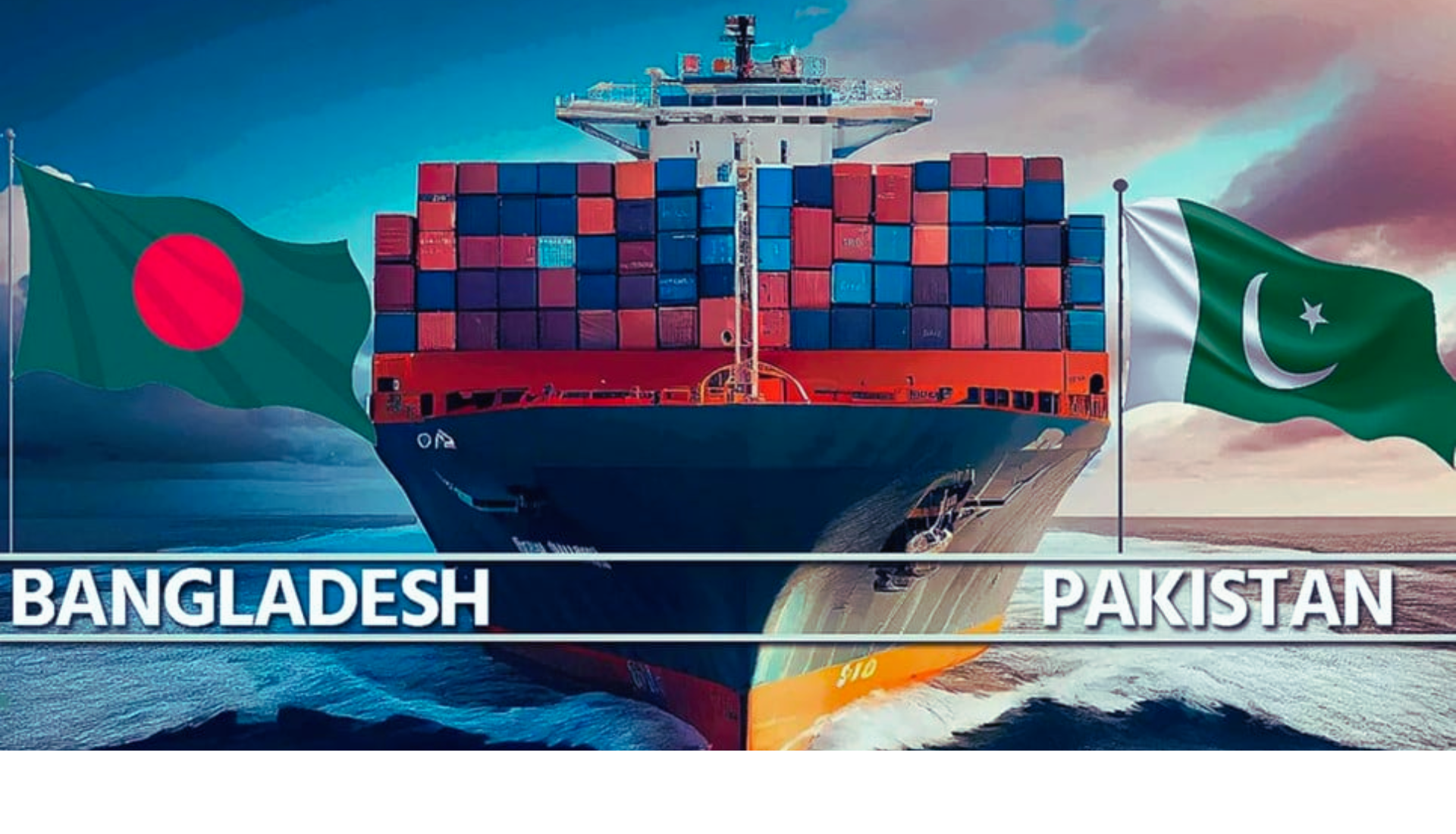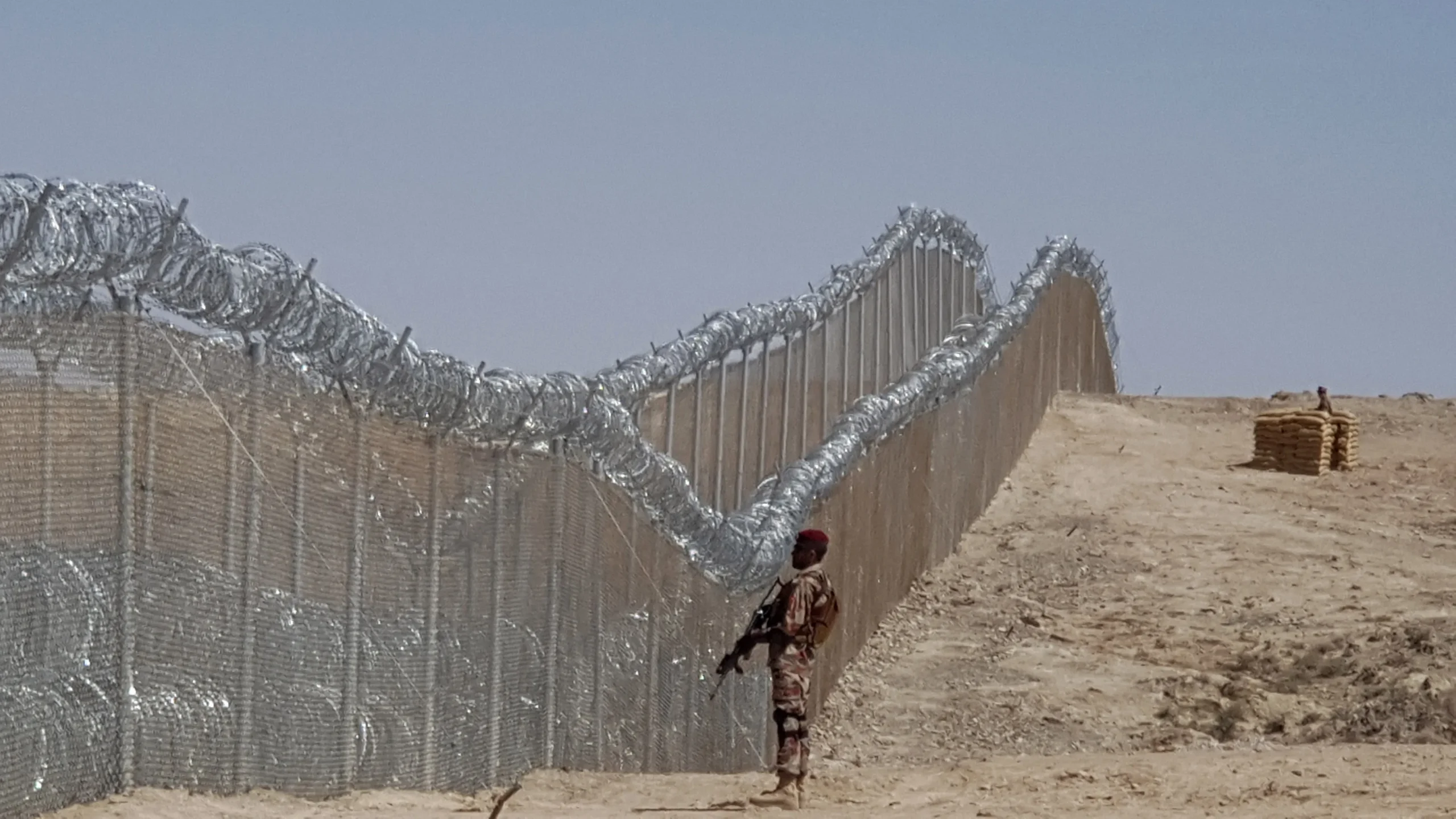This article is the second in the series and a continuation of the first article already published; titled “The QUAD.”
“Politics is war without bloodshed while war is politics with bloodshed.”
~Mao Zedong
Synopsis
Quadrilateral Security Dialogue (QUAD) began as a coordination mechanism in response to the humanitarian crisis in the aftermath of the 2004 Indian Ocean Tsunami that killed 227,898 people and devastated nearly two million others. But what seemed like an extraordinary alliance began to fade away, becoming almost meaningless by 2007 until its revival in 2017. The four nations that united under this coalition came with their respective national agendas, each having something in common with which they could work together. Japan and India both have border confrontations with China; with Japan pushing to resolve the disputed Senkaku Islands, Taiwan’s political conundrum, and maritime rights within the East China Sea more specifically Exclusive Economic Zones (EEZ). India, on the other hand, considers itself a rival to China and hopes to resolve its outstanding disputes involving Ladakh, counterbalancing military might within the region, and securing maritime rights within the South China Sea.
Australia-China relationship has traditionally been dominated by geopolitics and strategic concerns, but since the 1980s, the two nations have developed a range of common bilateral and regional interests; including strong economic ties. Australians had always remained pro-US; primarily owing to their similar political, cultural, and social values. During WWI, Aussies joined the alliance of Great Britain and fought alongside it against the axis powers. Needless to say, Australians were overtly inclined towards liberal democratic governance with an economy rooted in a capitalist free-floating market structure. Aussie-China relationship started deteriorating from 1996 onwards, owing to consistent criticism of Chinese regional and transcontinental influence, be it missile tests, trade expansion across Asia, political haggling in Taiwan, or more recently COVID-19 pandemic. China perceived these changes of policies as more ‘towing the US line’ with Australia’s open prejudice reflective more of a pawn being played to offset China’s ever-increasing global dominance resulting inadvertently towards regional instability. All these factors play a contributory geopolitical role in facilitating the US to remain relevant within Asia-Pacific and deny China any hegemony be it present or future.
The US currently leads the world in terms of trade; be it export market or import source. But US projections look meek as China’s unprecedented growth and economic policies have not only gained tremendous ground in very little time but are expected to overtake the US by 2028 that too under the Covid-19 pandemic environment where nearly all nations have suffered economically.
US economic policies also took a nosedive in the ‘Trumpian’ era by isolating itself from much of the global trade e.g., BREXIT, NATO disengagement, and Tariff wars with China.
Similarly, the US and its QUAD allies are amongst the top beneficiaries of Chinese markets e.g., China is the sixth-largest foreign direct investor in Australia ($44 billion in 2020), accounting for 4% of total foreign direct investment. In recent years, Chinese investment has broadened from mainly mining to sectors such as infrastructure, services, and agriculture. Ironically, all four QUAD members have trade agreements with China for billions of dollars. Keeping all facts in view there is a need to delve into the question as to why this QUAD is consistently being portrayed as an ‘Asian-NATO’.
Defining a Superpower
How can one define a superpower, or more importantly what makes a country be recognized as a superpower? This can be answered by simply observing that particular nation whose influence is trans-frontiers. A nation possessing a strong economy with a powerful military inevitably invites weaker yet useful nations under its shade of alliance. The dominant role in the arena of geopolitics results in weaker nations trying to mimic the superpower with the intention of one-day sharing / possessing similar capabilities. The fact that this article is being written in English (Arial font; not Calibri) speaks volumes about the deep impact West, specifically, the US has had over a century, shaping hearts and minds of people across the globe to acknowledge or adopt the ‘American’ way; be it a liberal democratic governance structure, capitalist free markets, secularization of state, language medium, education or cultural impact.
China is quickly closing in on the US with future projections as close as 2030 where China may dominate the global stage in terms of economy, military, politics, and cultural values. China has exponentially increased its military potential from 2001 to 2020 and currently holds 2nd position after the US on a global scale. Meanwhile, China has also advanced its nuclear technology to cater for multi-spectrum threats, aggressive response beyond 2nd strike capability, missile defense, and more recently hypersonic transcontinental delivery vehicles. It has achieved a breakthrough in stealth technology and currently implements it within naval and air assets. It has overtaken the US in naval power, with 11 aircrafts’ carriers, more than 200 naval ships, and 6 or more possible nuclear-powered submarines; China presently holds the largest naval fleet in the world. It is creating groundbreaking work in the fields of artificial intelligence (AI), big data, fifth-generation telecommunications networking (5G), nanotechnology and biotechnology, robotics, the Internet of Things (IoT), and quantum computing.
China is eclipsing the US as the world’s largest overall (public and private) R&D investor.
Already outspent the US on intramural funding in 2017 ($67.4 to $47.1 billion), Beijing again exceeded US gross domestic spending on R&D in 2018 (after sitting at roughly one-third below US spending levels a decade ago). By comparison, Japan’s total R&D investment is about where China’s spending was in 2008 (roughly $150 billion), and its intramural government spending only amounts to $12.1 billion.
Kurt Campbell, Biden-admin appointed Indo-Pacific Coordinator (National Security Council) hints at the Biden administration’s growing interest in South Asia. Dubbed the “Asia-Czar”, his appointment lays great emphasis on US security interests in the Indo-Pacific region.
His appointment is meant to reassure allies that the US will be playing a more significant role in Asia, and intends to take its role against China even more seriously. His strategy for China isn’t focused on eliminating China or altering its governance system, however it does intend to increase US influence, within Asia through several means. Firstly, his plans include building ad-hoc bodies for every issue faced within the region, instead of general coalitions. An example of this is the proposed D-10 coalition, of democratic states, which will include India, South Korea, and Japan. Secondly, Campbell advocates “coexistence” as opposed to “competing” when it comes to relations with China. He advocates a position, where instead of playing “a war of narratives”, the US strengthens the positions of its allies, by supporting their trade, technology, and development. He admits in his essay in Foreign Affairs, that this approach would mean conceding some of China’s already growing influence, but in the long run, it would allow the US to build significant influence within Asia while sustaining trade relations.
Additionally, his approach, according to a paper he co-authored, includes greater dispersion of the US armed forces across the region, and reduced reliance on platforms like aircraft carriers. Suggestions were also proffered for a shift to long-range ballistic missiles, long-range conventional cruise unmanned carrier-based aircrafts, and guided-missile submarines. All these policy suggestions can solidly predict greater intervention throughout Asia; Pakistan and China will need to play an active role in countering India and US’s growing influence within the region. While Campbell’s interviews and papers frequently talk at great lengths about India, Japan, China, and South Korea, he did not comment nor expressed any views on the situation in Afghanistan, particularly Trumps’ legacy of troops withdrawal and ongoing peace talks. The situation that Biden inherited is a failure of US policy in Afghanistan, homegrown extremists, a failing economy, and utter mismanagement of the Covid-19 pandemic. The question arises then since Campbell prefers small dispersions over large concentrations of military resources, will there be future military interventions by the US or its presence in allied countries.
As explained in the first part of this article under the topic of ‘Elements of Power’; US Joint Doctrine described the key aspects as DIME (Diplomacy, Information, Military, and Economy). Ergo, by US’s doctrinal definition China can be projected as the future dominant power that will overshadow all nations of the world.
It is therefore not surprising that QUAD is being described by media and academics as some sort of counterbalance in South Asia even though China has yet to flex its muscles.
Perhaps it won’t be farfetched to assume that the world might shift from occidental languages to oriental, speaking and teaching Mandarin in near future. Reflections from now onwards will be more towards understanding the connection between military aspects of the QUAD.
Military & Maritime Security
‘Malabar’, which began as a bilateral naval exercise between India and the US in 1992 and became multilateral with the addition of Australia and Japan, has also significantly grown in scope and complexity. Twenty-five editions of the exercise have been conducted till-to-date with the last edition conducted in two phases in August and October 2021. Meanwhile, Aman (literally meaning ‘Peace’) naval exercises were conducted by Pakistan with the aim and objective of a naval alliance in peace, primarily focusing on anti-piracy, human trafficking, arms smuggling, etc. Aman naval exercises were launched by Pakistan in 2007 with the slogan “Together for peace”, an agenda to promote regional cooperation and stability, greater interoperability, and to display united resolve against terrorism and crimes in the maritime domain including piracy.
Since 2007, Pakistan has hosted seven different maritime exercises in the Arabian Sea. During its first-ever launch, only three countries participated but expanded considerably to an extent where Aman-21 was one of the largest naval exercises conducted in the Arabian Sea with the participation of 45 navies of different nations. While addressing the participating countries, Rear Admiral Ashraf said, “This exercise is a reflection that nations can play a constructive role in building new ties, establishing innovative relationships while strengthening existing ones”. Its projection is deemed positive and militarily defensive. While Aman hosted by Pakistan is primarily a defensive alliance oriented towards peace and stability of the region. In comparison, Malabar exercises hosted by India are hostile and may contribute more towards the instability of the entire Indo-Pacific region. Quad nations participating in Malabar also conducted anti-aircraft and air-defense exercises by bringing their respective aircraft carriers and submarines. Moreover, the US negotiated an agreement with India and Japan to erect an electronic seawall in the Bay of Bengal, more specifically Malacca Strait to detect and deny Chinese submarines from entering into these waters. All these actions point towards a strategic paradigm that proffers advantages to a select few nations rather than an inclusive effort for the main stakeholders within this region. It goes without saying that amongst the QUAD nations, one country that has much to lose will be India which is blindly toeing the American line even though the recent events that unfolded in Afghanistan are clear indications of US grand strategic failure.
Australia was initially hesitant to join QUAD due to its economic relations with China as discussed earlier but during the ‘Trumpian’ era of offensive and aggressive military activities, Australia eventually decided to play an active role from 2020 onwards.
It would be pertinent to provide a brief context to Aussies becoming serious about maritime affairs; come 2016, Australian Prime Minister Malcolm Turnbull signed a A$50 billion (€31 billion) deal with the partly French government-owned Naval Group called Direction des Constructions Navales International (DCNS) to design a new generation of submarines, known as the Attack-class, under the “Future Submarine Program”, scheduled to replace the Collins-class. In less than a month, Aussies backed off the deal despite having spent $2.4 billion on the French project, escaping penalties amounting to millions of Euros owing to technicalities within the contract, the Australian government terminated the contract and instead went ahead with US-UK Mutual Defense Agreement. It is expected that Aussies will now probably be in possession of highly enriched uranium (HEU) from the US for the nuclear reactor that powers the submarine. These US-based naval reactors are all pressurized water reactors (PWR) incorporated with the latest UK propulsion system from Rolls-Royce PWR3. The same tech that powers the Royal Navy’s new Dreadnought-class submarines is currently being built based on a US design yet using UK reactor technology. Be it as it may, keeping the economic dependency of Australia and Japan with China there still is a strong possibility that they might disengage from this alliance after acquiring some serious naval power.
Another aspect of this seemingly innocent deal between allied nations is the Nuclear Non-Proliferation Treaty (NPT) that aims to ‘prevent nuclear proliferation without interfering with states’ and “inalienable right” to benefit from nuclear energy’s peaceful applications. Here lies the dual nature of the US while dealing with its ideologically aligned states, finding loopholes and backdoors amongst the highest level of agreements as long as it fulfills its national interest; these actions of the US are as old as their inception. This argument can be augmented further by mentioning just recent incidents of nuclear proliferation within India that caught the eye of mass media yet somehow did not invite much attention by the veto nations. Ironically, Pakistan has been constantly threatened by the Financial Action Task Force (FATF) regarding the vulnerability of its nuclear assets.
The Indian Intent
Dissecting India’s role in QUAD it can be seen that it is altogether an entirely different ball game; for starters, it is the only country amongst QUAD that deems China not only as a threat but a rival. Zooming out we can see an emerging scenario where we can safely assume that Malabar being hosted by India is primarily aggressive due to the inclusion of anti-submarine and anti-air elements inadvertently denying passage in maritime routes; all this may contribute significantly towards destabilization of our region where the key player China is being cornered into what it rightly states “A post-Cold-War tactics”.
India for the past decade has drastically focused on its military capabilities even at the expense of its poor population.
India has inducted Dhanush howitzer that is capable of firing American precision-guided Excalibur artillery ammunition; five regiments of Russian-made S-400 Triumf advanced Air Defense Systems (NATO – SA-21 Growler) are under finalization, 36 Rafale fighter jets ordered from French firm Dassault Aviation, Predator drones from the US and its first Indigenous Aircraft Carrier Vikrant is set to begin its sea trials this year. All this jingoism coupled with Narendra Modi’s open hand to rising Hindutva extremism makes it the perfect catalyst towards igniting the entire region with flames of war. Even after a brutal beating at Ladakh where India lost its territory to China and a humiliating defeat at the hands of Pakistan Airforce on 27th February 2019 (Operation Swift Retort) where their top pilot was shot down and captured; India still remains addicted to delusions of grandeur and becoming the dominant power of South Asia. Meanwhile, there are strong rumors that the Indian Navy is being pressed for an aggressive maneuver against the Pakistan Navy, something that may fall on the lines of “surgical strikes”. This is where India first allows an incident involving mass causalities such as Pulwama, then using it for propaganda purposes to rile up its nation for acquiring political mandate thereby paving a way for a cross-border military action on a limited scale. Pakistanis can only hope that this time sense prevails and instead of shooting down our trees and killing our crows, they would settle for fishing a couple of pomfrets instead.
Naval forces constitute amongst the most expensive in terms of defense budget allocation since every ship, submarine, or naval platform amounts to millions of dollars. The pitch of this article may be challenged that if India’s stance is so much naval orientated then why did it undergo budget cuts. The answer to that is simple; it is not just India but nearly all defense forces across the globe including superpowers that have been affected owing to the Covid-19 pandemic. Ergo possibility of Indian naval aggression and future misadventures in the Arabian Sea cannot be ruled out. As far as Indian naval prowess goes e.g., they constantly remind Pakistan about their aircraft carrier. Since the author is not a specialist in naval warfare and strategy then at best he can use his common sense to reason that this mammoth of a ship is more a white elephant than a behemoth war machine. An Indian aircraft carrier is primarily a political symbol more than a war machine since it requires an entire armada of naval destroyers, frigates, air surveillance, and submarines that accompanies it across the tides less it may be sunk by a lone ‘Ghazi’ submarine prowling the corridors where the Indian Ocean meets the Arabian Sea.
Economic Significance of Maritime Affairs
Now focusing on the economic effects concerning maritime affairs the foremost topic that will fall under consideration is China’s Belt Road Initiative (BRI) which currently is an alliance of nearly 60 nations across the globe. With a massive potential towards economic revitalization especially in times when nearly all essential items be it food items, metal, fabric, composite, or fuel, have inflated to a point where even middle-class families have lost hope for any future financial stability; China’s BRI is a lucrative offer. Alas, the US and most of its allies in the west are wary of these initiatives. China-Pakistan Economic Corridor (CPEC) offers china an economic gateway towards its growing potential, termed the crown jewel of BRI. Once it starts smooth operations then economists have predicted China to exponentially grow and surpass all superpowers of the world.
Pakistan inadvertently has become crucial for China in terms of stability and security.
Pakistan Armed forces are currently playing a pivotal role in rooting out any non-state actors. All the while, Pakistan Navy has beefed up on its maritime security understanding the criticality of securing not just deep seaports but also maritime routes. Pakistan Navy has created Task Force-88 which is a composition of ships, helicopters, sea, and land-based surveillance systems. This force not only provides security for military vessels but specifically for commercial vessels entering or leaving Pakistan’s seashores. Major producers of energy in the world are GCC nations. They lie in the west of Pakistan while on its east are the major consumers of this energy. The synergy of two sides coming together for mutual benefit beholds tremendous potential to yield dividends in terms of economic prosperity, progress and stability.
‘Blue Economy’; a term in economics that relates to the exploitation, preservation, and subsequent regeneration of the marine environment, that includes a wide range of economic sectors, from conventional fisheries, aquaculture, maritime transport, coastal, marine and maritime tourism, to more emergent spaces such as coastal renewable energy, marine ecosystem services, seabed mining, and bio-prospecting. Pakistan successfully got its demand approved from the United Nations Commission on the Limits of the Continental Shelf (UN CLCS) for extension of continental shelf limits from 200 nautical miles to 350 nautical miles, on 20 March 2015. “As a consequence of this landmark development, Pakistan has been granted an additional area of approximately 50,000 square kilometers,” the foreign office said. It further added; “Pakistan will have exclusive rights for exploitation and exploration of resources at and beneath the seabed in this area per the UN Convention on the Law of the Sea”.
With Gawadar deep sea port fully operational, work on coastal belts being expedited, and marine institutions finally under the microscope, Pakistan is currently sitting on a gold mine of economic proportions.
Just to provide a brief overlay of the sectors harnessing tremendous potential; Aquaculture (fish farms etc), Maritime biotechnology, Bio-prospecting, Fishing, Desalination, Maritime transport, Coastal, marine and maritime tourism (Blue Tourism), Mineral resources, Offshore oil, and gas, Offshore power generation (tidal or wave), Shipbuilding and Ship repair, Carbon sequestration, Waste disposal, biodiversity, marine biospheres, oceanic development, and marine tourism. Conclusively, there is a lot of ground (sea, pun intended) to be covered which surely this paper cannot cover in a few pages. Unfortunately, there is very scant research available from our established academics when compared to the land-based potential. The present scenario is unfolding in favor of a future that focuses a lot on maritime affairs and security. It is, therefore, imperative for government to fill this policy vacuum and think beyond the land-based agri-economic reforms.
The views expressed in this article are the author’s own and do not necessarily reflect the editorial policy of the South Asia Times.





